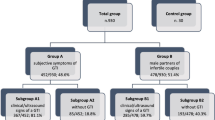Abstract
Trichomonas vaginalis is a sexually transmitted anaerobic parasite which causes vaginitis and cervicitis. The present study was carried out to determine the incidence ofTrichomonas infection in semen samples of asymptomatic men and also to understand the changes of semen characteristics in the infected individuals before treatment and after treatment with metronidazole (Flagyl, 400 mg×3× a day for 10 days). The semen obtained from 1131 men was examined for different characteristics andTrichomonas were detected in wet smear preparations in 50 cases (4.42%). The characteristics of semen in them was compared with 52 normal semen samples. Statistical analysis showed that the seminal fluid viscosity and percentage particulate debris was increased significantly in the infected group (P<0.001). There was no significant change in the pH of semen. Spermatozoan motility and morphologically normal forms were decreased significantly (P<0.001), spermatozoan viability was altered, and there was a significant change in membrane integrity (P<0.001) as indicated by the hypoosmotic swelling test. The significant improvement in semen characteristics were seen in 25 cases after a single course of treatment. Therefore, it is possible that in some cases, the infertility seen in asymptomatic individuals may be due to infection byTrichomonas.
Similar content being viewed by others
References
Rein MF, Chapell, PA: Trichomonas candidiasis and the minor veneral disease. Clin Obstet Gynaecol, 1975;18:73
Kreiger JN: Urologic aspects of trichomoniasis. Invest Urol 1981;18:411
Daly JJ, Sherman JK, Gree L, Hostetler TL: Survival of trichomonas vaginalis in human semen. Genitourin Med 1989;65:106
WHO: World Health Organisation laboratory manual for the examination of human semen and semen-cervical mucus interaction.In WHO Special Programme of Research Development and Research Training for Human Reproduction. Cambridge University Press, Cambridge, 1987
Gopalkrishnan K, Anand Kumar TC: Simple method to evaluate semen viscosity: Model to test male contraception. Adv Cont Deliv Sys 1989;5:355
Jayenran RS, Vander Ven HH, Perez Pelaez M, Crabo BG, Zaneveld LJD: Development of an assay to assess the functional integrity of human spermatozoan membrane and its relationship to other semen characteristics. J Reprod Fertil 1984;70:219
Whittington MJ: Occurrence of Trichomonas vaginalis in semen. J Obstet Gynaecol Br Emp 1951;58:614
Feo LG, Varano NR, Felter TR: Trichomonas vaginalis in urethritis of the male. Br J Ven Dis 1956;32:233
Gopalkrishnan K, Hinduja IN, Phutane L, Mehta AP: Role of microbial study in selection of subjects for in vitro fertilization and embryo transfer (IVF-ET). Ind J Med Res 1988;88:141
Tuttle JP, Holbrook TW, Derrick FC: Interference of human spermatozoal motility by Trichomonas vaginalis. J Urol 1977;118:1024
Langley JG, Goldsmid JM, Davies N: Venereal trichomoniasis, role of men. Genitourin Med 1987;63:264
Krieger JN, Rein MF: Canine prostatic secretions kill trichomonas vaginalis. Infect Immun 1982;37:77
Author information
Authors and Affiliations
Rights and permissions
About this article
Cite this article
Gopalkrishnan, K., Hinduja, I.N. & Anand Kumar, T.C. Semen characteristics of asymptomatic males affected byTrichomonas vaginalis . J Assist Reprod Genet 7, 165–167 (1990). https://doi.org/10.1007/BF01135682
Received:
Accepted:
Issue Date:
DOI: https://doi.org/10.1007/BF01135682




